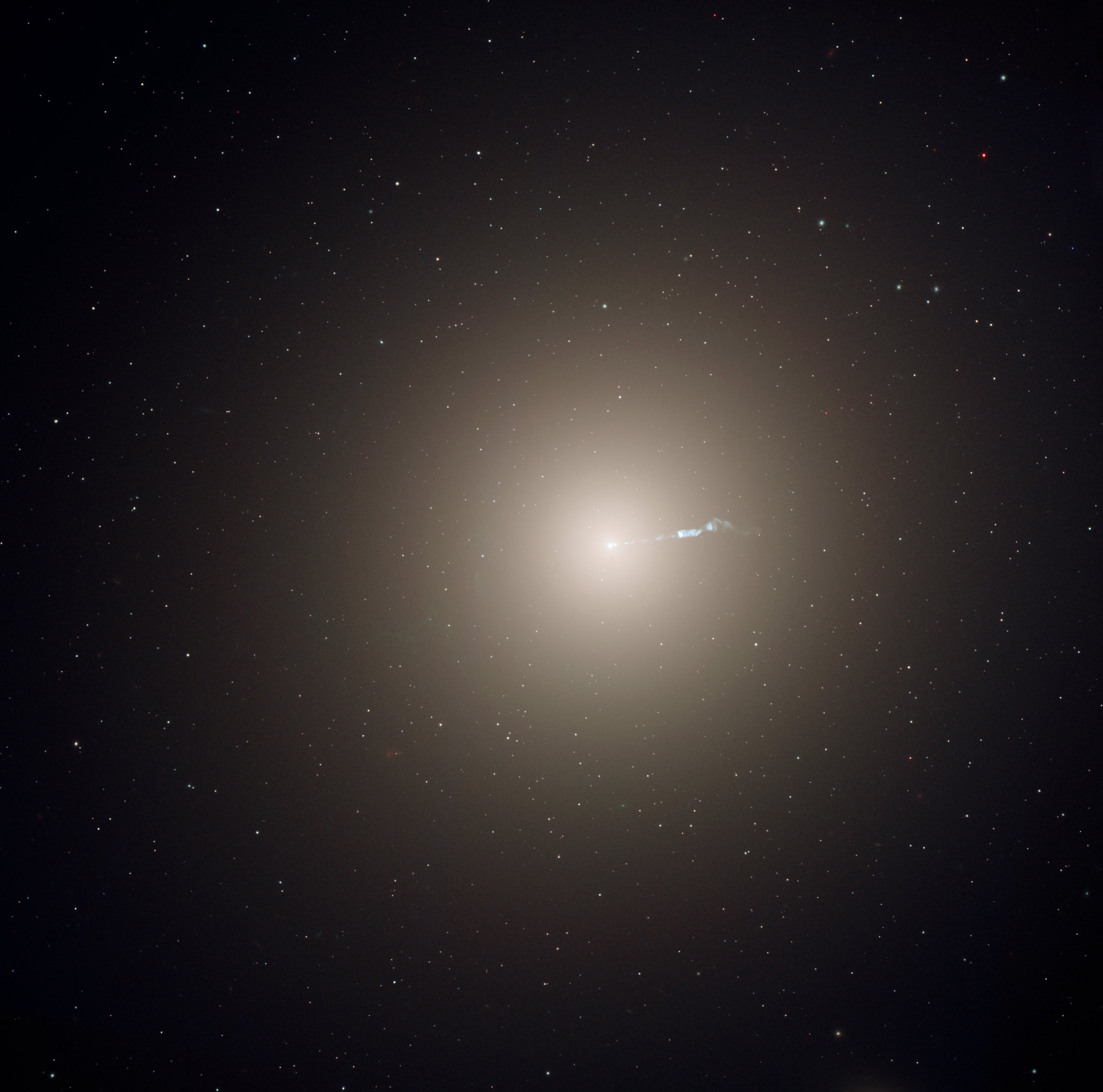
M87 stands apart from its roughly 2,000 neighbors in the Virgo Cluster of galaxies for a number of reasons. For one, this supergiant elliptical is one of the most massive in our local universe, housing 100 billion stars with a total mass nearing 2 trillion Suns. But perhaps it is most famous for what lies at its core: one of the best-studied supermassive black holes, and the first to have its shadow captured in a photograph. That groundbreaking image of the 6.5-billion-solar-mass black hole, named M87*, was released in April 2019 by the team behind the Event Horizon Telescope, an international network of radio telescopes.
Also famously appearing in photographs of M87 is the jet of matter being expelled from its central black hole’s surroundings at nearly the speed of light. In 1918, Heber Curtis at Lick Observatory took a photographic plate of the galaxy and noted the jet as a ray of light emerging from the galaxy. As a visual target, it’s an observing challenge of the tallest order; it wasn’t until years later that Otto Struve finally sighted the 5,000-light-year-long feature using the 100-inch telescope at Mount Wilson. The first amateur visual detection was made by Barbara Wilson in her 20-inch reflector at the Texas Star Party in 1991.
Your view of this galaxy from your own backyard will likely be a little more typical: a glowing orb with a fuzzy outer shell. It sits about 3½° northwest of Rho (ρ) Virginis glowing at magnitude 9.7 and spanning 7′. Only 10′ southwest of the object is a dimmer elliptical, 11th-magnitude NGC 4478, which may require moderate to high magnification to see well.









